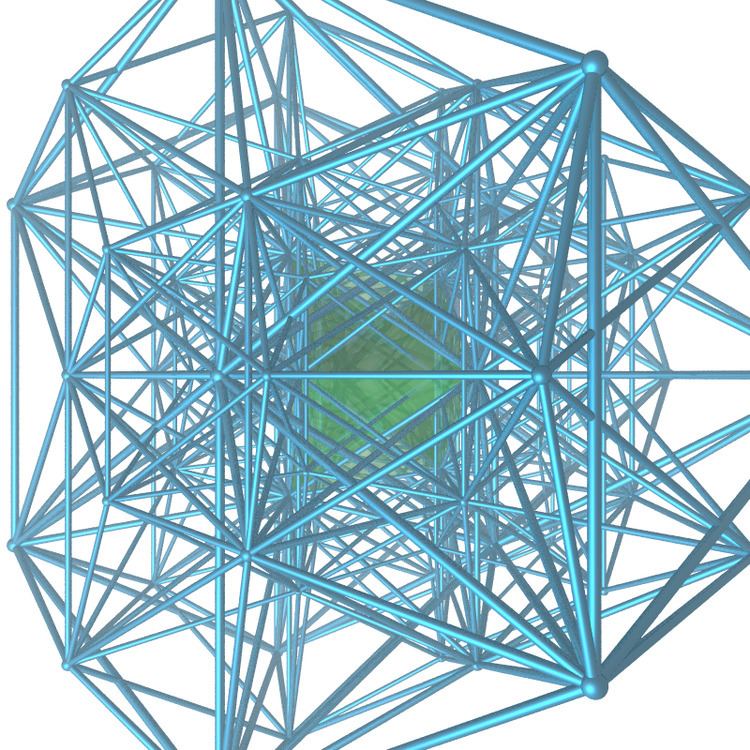 | ||
In four-dimensional Euclidean geometry, the 16-cell honeycomb is one of the three regular space-filling tessellations (or honeycombs) in Euclidean 4-space. The other two are its dual the 24-cell honeycomb, and the tesseractic honeycomb. This honeycomb is constructed from 16-cell facets, three around every face. It has a 24-cell vertex figure.
Contents
This vertex arrangement or lattice is called the B4, D4, or F4 lattice.
Alternate names
Coordinates
As a regular honeycomb, {3,3,4,3}, it has a 2-dimensional analogue, {3,6}, and as an alternated form (the demitesseractic honeycomb, h{4,3,3,4}) it is related to the alternated cubic honeycomb.
Vertices can be placed at all integer coordinates (i,j,k,l), such that the sum of the coordinates is even.
D4 lattice
The vertex arrangement of the 16-cell honeycomb is called the D4 lattice or F4 lattice. The vertices of this lattice are the centers of the 3-spheres in the densest known packing of equal spheres in 4-space; its kissing number is 24, which is also the same as the kissing number in R4, as proved by Oleg Musin in 2003.
The D+
4 lattice (also called D2
4) can be constructed by the union of two D4 lattices, and is identical to the tesseractic honeycomb:
This packing is only a lattice for even dimensions. The kissing number is 23 = 8, (2n – 1 for n < 8, 240 for n = 8, and 2n(n – 1) for n > 8).
The D*
4 lattice (also called D4
4 and C2
4) can be constructed by the union of all four D4 lattices, but it is identical to the D4 lattice: It is also the 4-dimensional body centered cubic, the union of two 4-cube honeycombs in dual positions.
The kissing number of the D*
4 lattice (and D4 lattice) is 24 and its Voronoi tessellation is a 24-cell honeycomb, , containing all rectified 16-cells (24-cell) Voronoi cells, or .
Symmetry constructions
There are three different symmetry constructions of this tessellation. Each symmetry can be represented by different arrangements of colored 16-cell facets.
Related honeycombs
It is related to the regular hyperbolic 5-space 5-orthoplex honeycomb, {3,3,3,4,3}, with 5-orthoplex facets, the regular 4-polytope 24-cell, {3,4,3} with octahedral (3-orthoplex) cell, and cube {4,3}, with (2-orthoplex) square faces.
This honeycomb is one of 20 uniform honeycombs constructed by the
